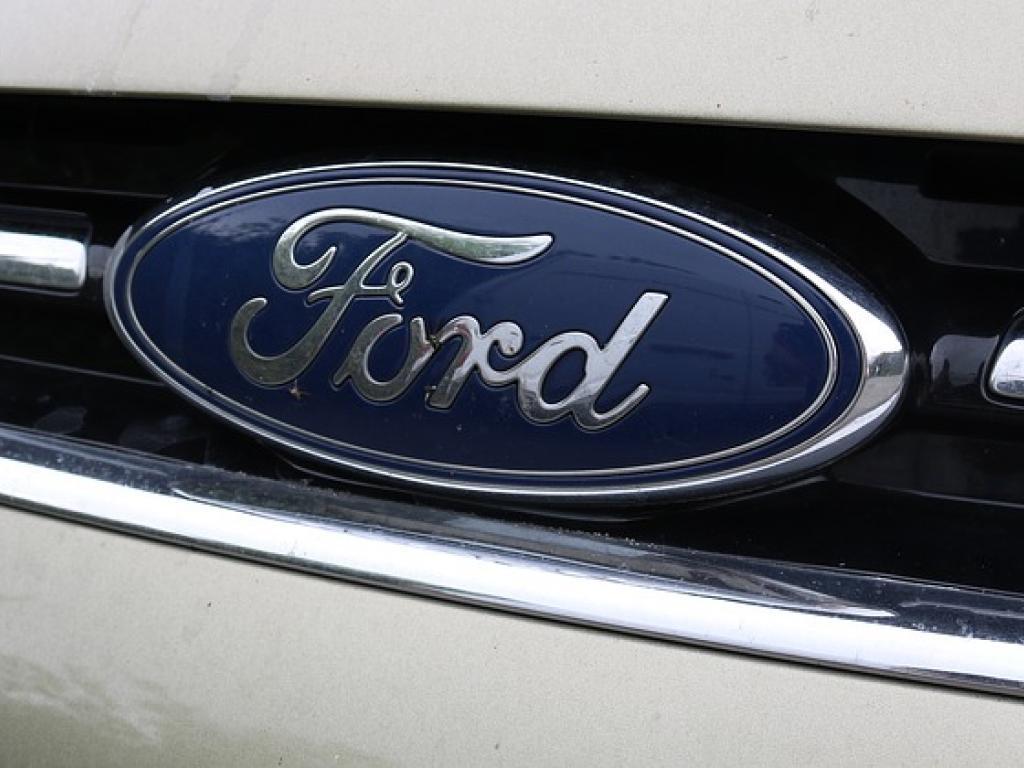US stock market, then due consideration is a must to buy Apple shares in India. Direct investments in Apple are more beneficial than going through mutual funds or ETFs route. Although mutual funds and ETFs can reduce the risk, they can also reduce the returns sometimes by including low ROI stocks into the portfolio. Apple Inc. designs, manufactures, and markets smartphones, personal computers, tablets, wearables, and accessories worldwide.
The company serves consumers, and small and mid-sized businesses; and the education, enterprise, and government markets. It distributes third-party applications for its products through the App Store. The company also sells its products through its retail and online stores, and direct sales force; and third-party cellular network carriers, wholesalers, retailers, and resellers. Apple Inc. was incorporated in 1977 and is headquartered in Cupertino, California. We sell different types of products and services to both investment professionals and individual investors.
These products and services are usually sold through license agreements or subscriptions. Our investment management business generates asset-based fees, which are calculated as a percentage of assets under management. We also sell both admissions and sponsorship packages for our investment conferences and advertising on our websites and newsletters. In contrast, if you're a conservative investor or you're approaching retirement, you may be primarily interested in the income your investments provide. You may want to examine the interest rate your bonds and certificates of deposit are paying in relation to current market rates and evaluate the yield from stock and mutual funds you bought for the income they provide. Of course, if market rates are down, you may be disappointed with your reinvestment opportunities as your existing bonds mature.
You might even be tempted to buy investments with a lower rating in expectation of getting a potentially higher return. In this case, you want to use a performance measure that assesses the risk you take to get the results you want. I also like the idea of digital tokens backed by physical gold. If you talk to millennials, they aren't interested in buying stocks and don't even have brokerage accounts, and they can't afford real estate. So they are looking for a store of value that's also convenient.
They are interested in new technology and blockchain and using a digital wallet. But unlike Bitcoin and Ether, whose prices trade wildly, gold-backed tokens have an intrinsic value and should be a lot less volatile. The resulting gold can be tracked from mine to vault using blockchain. I would invest in shares of companies that already use artificial intelligence for optimization of energy flows and storage.
For example, Stem, which recently became public via a SPAC merger with Star Peak Energy Transition Corp. I like that Stem has both energy storage and IT solutions on single platform and its IT revenue is based on subscription model with long term contracts. Wood Mackenzie Energy Storage Service expects that capacity of installed batteries will grow 25 times over the next 10 years globally.
That promises exponential growth in market capitalization for market leaders. In measuring investment performance, you want to be sure to avoid comparing apples to oranges. Finding and applying the right evaluation standards for your investments is important. For example, there's little reason to compare yield from a growth mutual fund with yield from a Treasury bond, since they don't fulfill the same role in your portfolio.
Instead, you want to measure performance for a growth fund by the standards of other growth investments, such as a growth mutual fund index or an appropriate market index. Here are some concepts to consider when evaluating the performance of your investments including yield, rate of return and capital gains and losses. As one typically expects from high-potential tech stocks, Bentley's shares aren't cheap, trading at a whopping 16 times sales.
But given an average price target of $69 per share – implying more than 40% price growth over the next 12 months or so – analysts clearly believe the company deserves to trade at a premium. If you reinvest your earnings to buy additional shares, as is often the case with a mutual fund and is always the case with a stock dividend reinvestment plan, calculating total return is more complicated. That's one reason to use the total return figures that mutual fund companies provide for each of their funds over various time periods, even if the calculation is not exactly the same result you'd find if you did the math yourself. One reason it might differ is that the fund calculates total return on an annual basis.
If you made a major purchase in May, just before a major market decline, or sold just before a market rally, your result for the year might be less than the fund's annual total return. It is a measure of the income an investment pays during a specific period, typically a year, divided by the investment's price. All bonds have yields, as do dividend-paying stocks, most mutual funds, and bank accounts including CDs.
Right now, we are reducing risk within our equity assets, so it's good timing for us that we can defer or eliminate some of the embedded capital gains tax, but it is a 10-year holding period. To invest in the "E" part of ESG, or Environmental, Social and Governance investing, I'd encourage investors to think outside the box. Buying exchange-traded funds that track the space is the first approach for many people, while buying individual green-energy companies might be the second.
The challenge with emerging industries is that it's often very hard to predict the winners. The current landscape of green-energy companies may not even include the future leaders. Some of the best research is happening in conglomerates like IBM, GE and Honeywell, yet buying their stock would only give you a fraction of exposure to the space.
People like to use venture funds like ours as a platform for co-investing – they can see the companies and then, if they want, invest directly in future rounds. Expected returns are the same as for other types of venture capital investments. With more people being pushed to take part in the digital economy, business models that deliver essential services and products online, especially for the above sectors, will continue to see strong growth.
We're monitoring our own portfolio of companies, including Singapore-based influencer agency Gushcloud and live-streaming and social-entertainment company M17 Entertainment. If a fund has a lot of taxable short-term gains, your return is reduced, which is something to keep in mind in evaluating investment performance. You can look at a mutual fund's turnover ratio, which you can find in a mutual fund's prospectus, to give you an idea of whether the fund might generate a lot of short-term gains. The turnover ratio tells you the percentage of a mutual fund's portfolio that is replaced through sales and purchases during a given time period—usually a year.
Mutual funds, for example, are different from stocks and bonds when it comes to capital gains. As with a stock or a bond, you will have to pay either short- or long-term capital gains taxes if you sell your shares in the fund for a profit. But even if you hold your shares and do not sell, you will also have to pay your share of taxes each year on the fund's overall capital gains. Each time the managers of a mutual fund sell securities within the fund, there's the potential for a taxable capital gain . If the fund has gains that cannot be offset by losses, then the fund must, by law, distribute those gains to its shareholders.
To assess how well your investments are doing, you'll need to consider several different ways of measuring performance. The measures you choose will depend on the information you're looking for and the types of investments you own. For example, if you have a stock that you hope to sell in the short term at a profit, you may be most interested in whether its market price is going up, has started to slide, or seems to have reached a plateau. If your investments are not showing any gains or your account value is slipping, you'll have to determine why, and decide on your next move. To free up money to make these new purchases, you may want to sell individual investments that have not performed well, while not abandoning the asset allocation you've selected as appropriate. In terms of valuations, with a 12 month forward price to earnings ratio of 17 times, some investors maintain that the U.S. is simply expensive.
It is undeniable that there are "cheaper" equity markets to be found. We would argue, however, that given uniquely strong U.S. economic momentum, investors can expect to pay more to own these fundamentals, and won't be wrong to do so. One option is to invest alongside institutional funds, which are selling holdings in thermal coal-related investments and looking for sustainable investments that are environmentally and socially responsible.
Other ways to invest include funding private renewable project developers. It's difficult to gain direct exposure to these firms, though, and sorting through the heap to find winners is essential. As projects finish construction and begin operations, they're sold to large investors looking for a diversified portfolio of long-term stable cash flows.
Most major private equity funds offer opportunities to invest here. We expect this trend to accelerate as sustainability becomes the central investment philosophy for more private capital. The individual stock investing side here can be fraught with risks, especially in biotech, because you can have massive volatility if a company doesn't get their drug approved by the FDA. But there are some large biotech ETFs out there that are very liquid and really good investments.
There are also dedicated mutual funds that we think are particularly good. We like the Blackrock Capital Allocation Trust, which launched as part of a sort of new generation of closed-end funds and trusts. But BCAT has no front-end load to the client—Blackrock has financed that—so it's a more consumer-friendly way to have permanent capital. When successful, this has resulted in a relatively fast path for the young graduates to become an owner-CEO and attractive financial returns for both investors and searchers.
We are investing in what we believe to be one of the top long/short equity hedge funds in the world. And though I can't name them for compliance reasons, I can explain what they're all about. Their strategy, as they would say, "invests in the future and shorts the past." At its core they are looking to invest in tomorrow's FAANG stocks and short sunsetting businesses that are pegged to outdated business models. Advancements in smart transportation, wellness and digital health are some of the themes within the portfolio. Also, certain areas of the fintech world — such as the "buy now pay later" movement — are of particular interest.
This is a Discretionary Managed Account whereby Stash has full authority to manage according to a specific investment mandate. Balance" is defined by investing deposits into underweight assets, and for withdrawals, trimming overweight positions. As you deposit or withdraw funds, your portfolio can slowly be aligned to the target allocation appropriate for your risk profile by additional money movements throughout the year. The investment team at Stash built these portfolios with the goal of optimizing risk-adjusted returns. This is achieved by utilizing the diversification benefits highlighted by modern portfolio theory.
The portfolios aim to optimize returns given a user's overall risk profile. Diversification and asset allocation do not guarantee a profit, nor do they eliminate the risk of loss of principal. Stash does not guarantee any level of performance or that any client will avoid losses in the client's account. Apple's share price is determined by its bid-ask spread, which is the difference between the price that buyers are willing to pay and the price that sellers are willing to accept.
Apple's price can fluctuate throughout the course of each trading day—when you buy Apple through Stash, we execute the market order during our next available trading window . At Stash, we don't recommend trying to predict the market when buying investments. We believe it can be a better strategy to buy quality investments you believe in, then hang onto them.
How Much Would 10000 Of Apple Stock Be Worth Today Market cap does have its drawbacks as an evaluation method, however. For starters, market cap changes frequently, and it's closely tied to the company's current share price. It doesn't take into account any of the direct financial metrics of the company, such as earnings per share, growth rate or book value.
This is not to say that unrealized gains and losses are unimportant. On the contrary, unrealized gains and losses determine the overall value of your portfolio and are a large part of what you assess in measuring performance, along with any income generated by your investments. In fact, many discussions of performance in the financial press, especially regarding stocks, focus entirely on these price changes over time.
Tesla's share price rose 2% on the news of the bitcoin investment, though it has since fallen by 5%. But a longer term example is Canadian tech company Microstrategy. Its share price has ballooned tenfold in value in the past year on the back of a heavy investment into bitcoin, but is also down by almost a quarter in the days since the Tesla announcement. Avid long term oriented investor with an interest in value, growth, and special opportunity (spin-offs, insider trading) investing styles. Strong believer in identifying companies with competitive advantages in order to avoid stock investment losses. An engineer by education, a project director at work, and a writer at home, I am meticulous and apt at both the qualitative and quantitative aspects of investment.
Income statements, balance sheets, and cashflow statements are for me a pleasant read. It is projected that the global automotive industry will grow to just under nine trillion U.S. dollars by 2030. It is anticipated that new vehicle sales will account for about 38 percent of this value. If Apple manages to seize a portion of this revenue via high-margin software and service offerings, this would be a tremendous net positive for Apple investors and the company's continued growth aspirations. Despite its brand name and influence, Apple is the outlier in this mix of tech heavyweights—a smartphone company amidst a bevy of global investors and Chinese media giants. Apple's assets in mapping and artificial intelligence could certainly help Didi in the future, if the nascent self-driving car industry overlaps with the ride-hailing industry.
But for now, it's hard to imagine what Apple can bring to Didi that Alibaba and Tencent cannot. When I first started investing in emerging markets in 1987, they accounted for just 5 percent of global market cap, and today it's about 40 percent. Our funds could only invest in six markets, and today it's about 70. Now is the time to buy in emerging markets, where we are seeing a terrific recovery. Today's low-interest-rate environment has driven investors into increasingly risky assets in search of yield.
Capital supply has outpaced capital demand in more "traditional" investment instruments, bringing lower expected returns and higher risk in the most commoditized market segments. Fortunately, opportunistic private markets enable an array of solutions that provide investors with the return that they demand, while enhancing their ability to diversify risk. To get exposure, you can buy anything from AAA-rated bonds to CLO equity, which is the riskiest tranche. Mr. Market moves the values of these instruments around, but what we like is that at the end of the day the return is determined by defaults. Defaults do happen, and Federal Reserve officials and the Bank of England have expressed concern about weakening standards in the loan market that enables CLOs, especially for borrowers with weak credit ratings. Yet for us, this is the purest compensation for taking default risk.

























